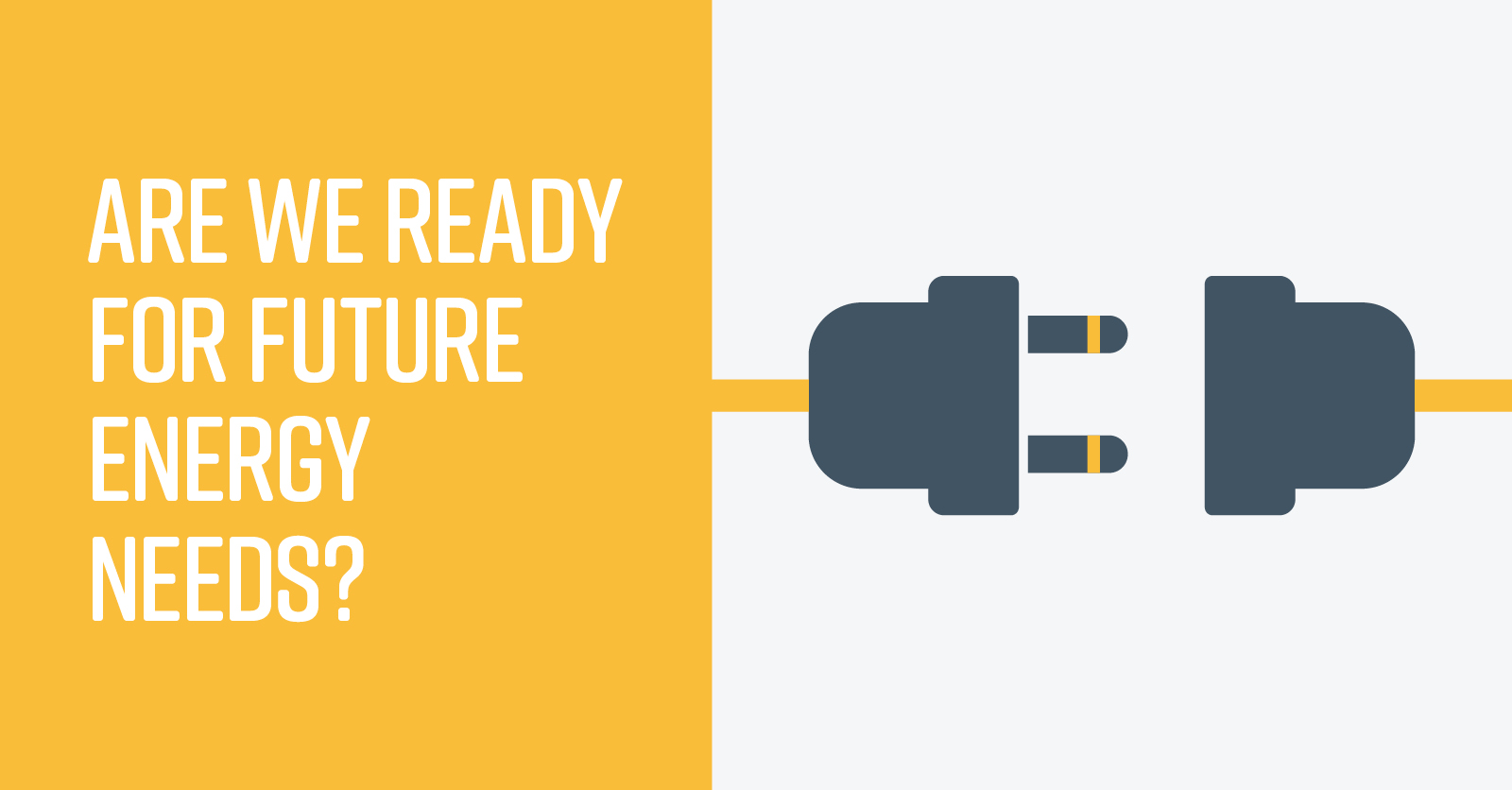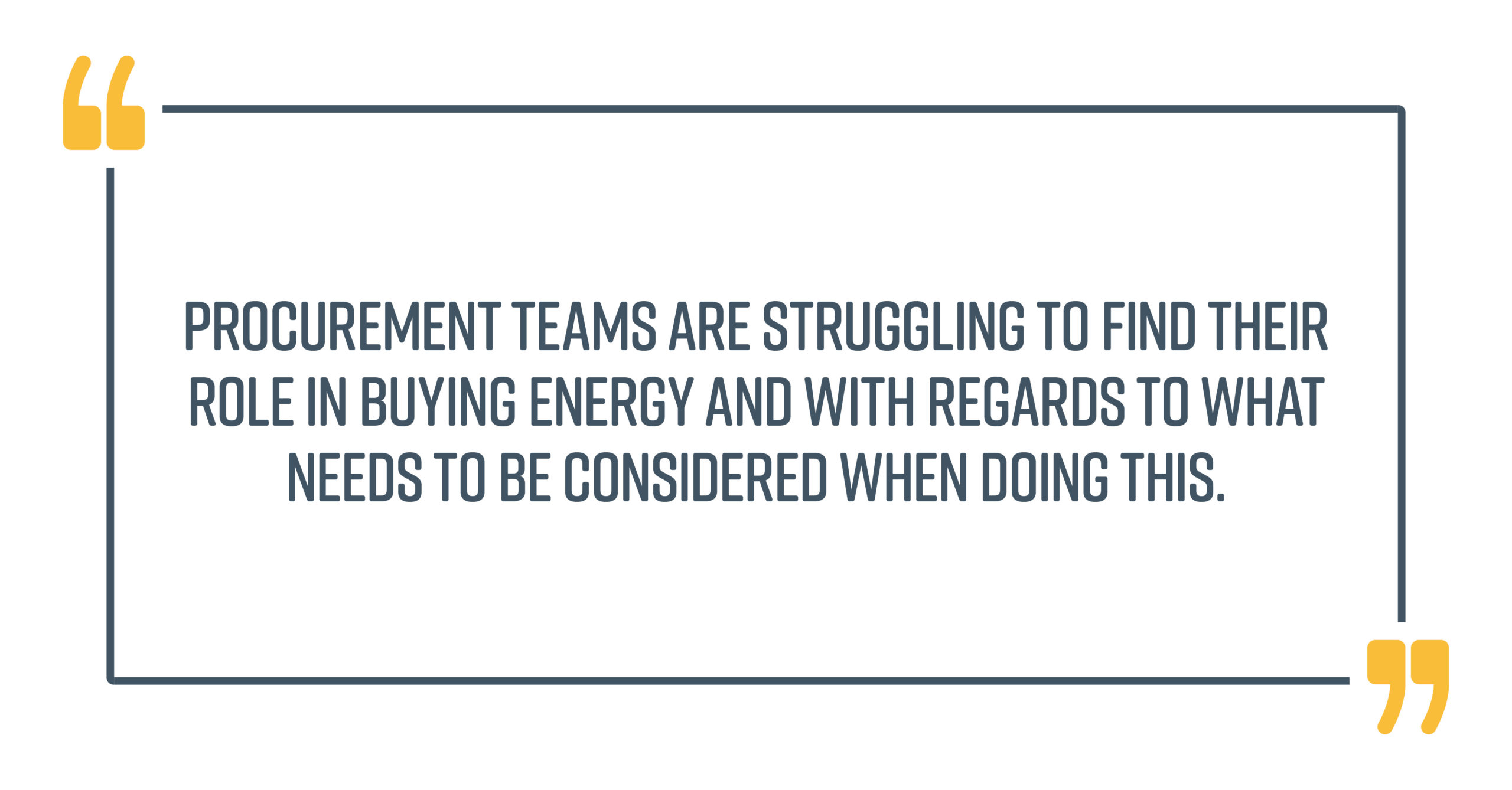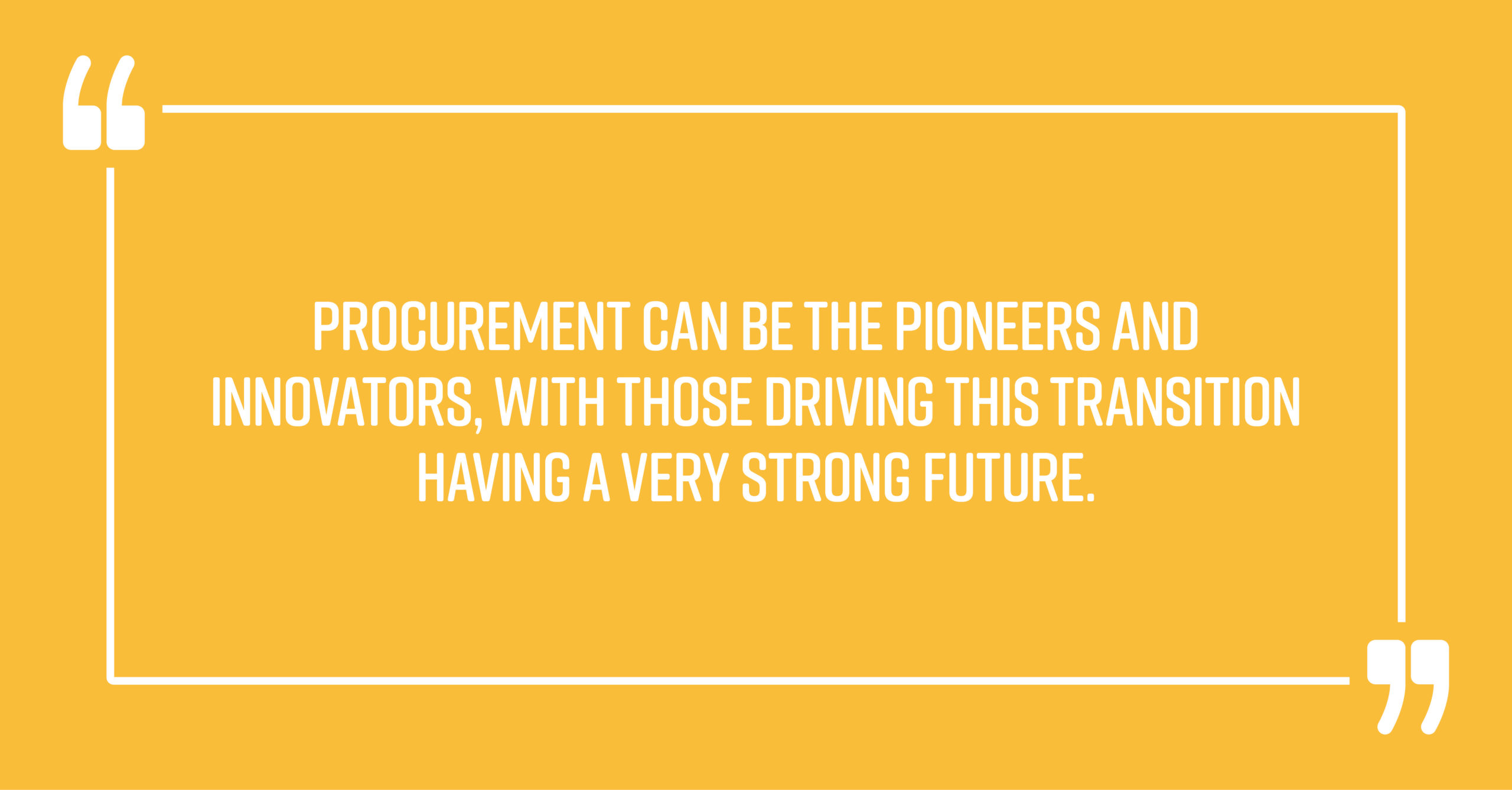Andy Martyr-Icke, who works in the UK with National Grid’s electricity distribution business, has over 35 years’ experience in utilities and electricity distribution.
Here he looks at how we will power procurement for the future. Specifically, what we need to know about energy and the future of how the industry and transport will be powered, plus, what procurement needs to be planning for.

Are we ready for future energy needs?
If our future energy needs and the infrastructure to support these remain as they do today, then no, we are absolutely not ready. The carbon neutral energy we will need is not realized yet and neither is the development of the infrastructure to support it. The challenge for the future will be investing ahead of needs – you must build it in order for people to want to transition and adopt it, which comes at a cost.
The impact on procurement is huge. Procurement teams are struggling to find their role in buying energy and with regards to what needs to be considered when doing this. We are seeing a lot of bottlenecks in supply chains, so we must be thinking far into the future of what energy we need, so we can provide the services that are in demand ahead of this.

The switch to renewable energy poses a great challenge for procurement as they are being asked to just ‘get on and source it’. We need a massive reform of energy markets, especially wholesale energy. For the future of renewable energy, we need large wholesale reform of how these markets work – this is the only way customers will see the benefits of renewable energy being the cheaper and more affordable alternative.
Engaging procurement here is imperative because even with the best energy targets set, if there isn’t a welcoming culture, it will be difficult to influence people and these targets won’t be met. Procurement must engage with their supply chains to provide exactly what they need to deliver future energy targets, facilitating the transition to renewable. Finding the most innovative solution to sourcing and distributing renewable energy will be key.
Another point to consider is where your supplier is sourcing their renewable energy from. Some will buy that energy on the wholesale market, whilst others will invest or own it themselves. This can not only affect the price you pay, but also impact your reputation, so make sure you dig deeper and ask.
Net zero – what do we mean?
Everywhere I look I’m seeing talk of net zero, with many organizations stating their commitment to net zero targets. But what does this really mean? Net zero refers to getting your business emissions down to as close to zero as possible, with carbon neutrality being the ultimate goal, and then removing green house gasses from the environment that are equal to your remaining emissions, taking you to a net total of zero. Whilst this all sounds great, we should consider which parts of our business we are referring to when setting net zero targets – be specific and realistic and consider the bigger picture.
Barriers to adoption
There are still many barriers to adoption of renewable energy. Taking electric cars as an example, the term ‘range anxiety’ has emerged – the fear of running out of charge on your vehicle. However, anyone who’s spent time driving electric vehciles knows that range anxiety isn’t really an issue at all, it’s access to available, reliable chargers that can cause concerns. Add to this the high upfront cost of these vehicles and the need for charging infrastructure, and there are understandable reasons for individual consumers to be hesitant. Although as an EV driver myself, I’d never go back to an Internal Combustion Engined vehicle, not even if you paid me!
For organizations looking to transition their fleet to electric vehicles however, there are even fewer barriers to adoption. Whilst there is still a hefty upfront cost, the cost of ownership for their staff is considerably less than a petrol or diesel vehicle in terms of fuel savings and tax relief benefits.
New technology
V2G or ‘Vehicle to grid’ is the new technology on the block. It may be in its early stages but I have no doubt that its’ growth will be accelerated in future. Consider a business with a fleet of electric vehicles, all plugged in, charging overnight. After, 7 or 8 hours they’ll be recharged, but in those hours after, before they are used again, when everyone is at home putting on their kettles and making breakfast, there is the capacity in the future to take that energy from the vehicle and put it back onto the grid to boil that kettle and cook that breakfast. In the future, we could become electricity traders ourselves.
This is a really important consideration for procurement as it’s about factoring in the future potential of using cars as grid level batteries to put energy back into the national grid, thus supporting their infrastructure.
Procurement can be the pioneers and innovators, with those driving this transition having a very strong future.

The future of battery technology
We mustn’t underestimate the future of battery technology. Often considered bad in terms of what’s in them, rather than what they do, batteries have a massive amount of longevity and potential. Yes, the carbon required to make and put them in an electric vehicle is significant, however, we tend to not consider that when electricity and energy is renewable, it will be possible to decouple the carbon from the energy. Meaning there will be no emissions and climate change associated with it. You’ll never be able to say that for a petrol or diesel car.
Batteries will likely become smaller, lighter, more efficient – much more energy dense. Circling back to the term ‘range anxiety’ from earlier, I don’t believe this exists. After driving for a couple of hours we tend to stop for a break – a coffee perhaps. It’s normal to charge your vehicle 60% and drive for another two hours. So, it’s actually ‘infrastructure anxiety’ that exists, knowing there is a charger available when we need it, and we are not quite there yet with this.
Doing our bit to help
We must consider how we balance our energy usage in future. Known as ‘demand-side response’, it’s definitely a buzzword in the industry at the moment, alongside ‘flexibility’. As consumers, we need the infrastructure in order to be flexible in our energy usage. The entire energy distribution and transmission network in any country was built on the principle of maximum demand and maximum capacity, so we know what the maximum is. Yet, the majority of the time we don’t drive those systems to the max. As we reach that maximum capacity, we need to have the flexibility and demand-side response to do our part and turn things off.
The circular economy
So how does renewable energy fit into the circular economy? Can we reuse energy? This borders on the philosophical because we know that energy can only be transferred, it is never destroyed. What we will end up with in most businesses is a carbon price, so that when we consider the costs of things across our supply chain, carbon is a part of that consideration. We make a judgement based on cost, carbon and circularity and the environmental impact associated with them. We are not there yet but we need to start rating circularity more, so that where sourcing locally might cost a little more, it is the preferred option.
Takeaways
There are going to be some really interesting times ahead. We don’t fully know what the future looks like for renewable energy, but we know it has to be different. We’ve got two options as I see it: we stick our heads in the sand, believe we can’t do anything, and do nothing. Or, we grasp this massive opportunity and be part of the change and get excited about it. If you are early in your procurement career, you are going to see huge changes in the way things are done. We’re all out there to ‘fight the good fight, right?’